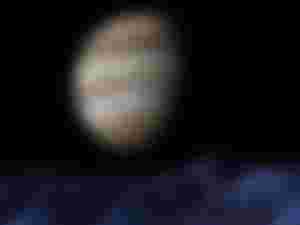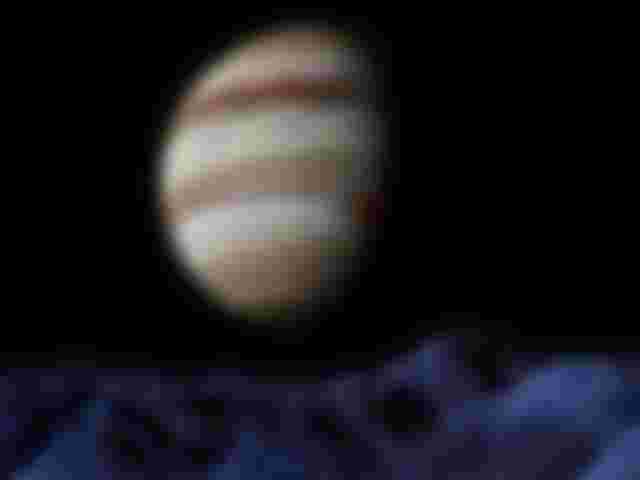We're Going On A Little Journey Through The Solar System #2
There Be a Storm That Lasts 340 Years?
We continue our series of articles. We continue to look at the atmospheric properties of the planets in our solar system.

Now, let's take a look at the atmosphere of Mars, our other neighbor in the Solar system, where rumors are spreading that future human travel may be possible, or even potentially habitable. Mars' thin atmosphere is made up almost entirely of carbon dioxide, along with small amounts of nitrogen and argon gases. If we were to stand on the surface of the planet Mars and look at the sky, we would see that the blue on Earth has been replaced by a hazy red hue. The reason for this is Martian dust suspended in the air. Blue tones can be seen on the horizon of Mars when the sun rises and sets.
Due to its thin atmosphere, the daytime air temperature on Mars can reach over 20 degrees Celsius, while at night it can drop below -150 degrees Celsius. The temperature effect of the rays absorbed by the Martian surface from the Sun decreases rapidly in the upper layers of its atmosphere. So much so that at noon in the equatorial region of Mars, your head can feel 0 degrees Celsius while your feet feel 24 degrees Celsius. Scientists think that the thinning of the atmosphere that causes such temperature differences is caused by the solar winds. Most likely, in the past, Mars was a planet with a thicker atmosphere that could maintain its temperature balance.

Now, stepping up a bit, let's reach beyond the Asteroid Belt to the gas giants. Patterned like a striped rug, Jupiter's thick atmosphere is almost entirely composed of light gases such as hydrogen and helium. Scientists think that the clouds in the upper part of Jupiter's atmosphere consist of three separate layers, totaling 70 kilometers. The fact that Jupiter, the largest planet in the solar system, completes its rotation around its axis at a dizzying speed of 10 hours causes these cloud layers to rotate in strips. That is, the difference in rotational speed between its equator and its poles creates fast air currents, separating the regions rotating at different speeds into dark bands and brightly colored regions. The materials that make up the bright patterns are thought to contain sulphurous and phosphorous gases seeping out of the planet's hot interior.
Since the atmosphere does not have a solid surface to restrain its activity, Jupiter's fierce winds can continue to blow non-stop for many years. Some storms in the equatorial region, where the planet's rotation is fastest, can reach speeds of 540 kilometers per hour. The most well-known of these storms in the regions close to the equator is called the "Great Red Spot". This storm, which is known to have been going on for at least 340 years, is a storm that is big enough for the Earth to easily fit in.
Yes, we are at the end of the second part of our article series. I hope you liked my post. Don't worry, it's not over. There are a few more things to write on this subject. See you soon.
Stay with love and science…


Thank you for sharing your astronomy articles, many people do not know these very interesting facts.